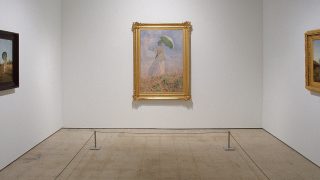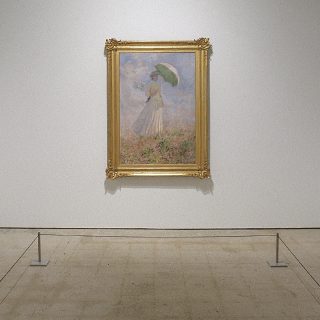Espoo Museum of Modern Art


05.03.2008 - 25.05.2008
12 x Claude Monet and Finnish Impressions
Alongside paintings by Claude Monet, the exhibition 12 x Claude Monet and Finnish Impressions at EMMA – Espoo Museum of Modern Art presents works by Finnish artists influenced in one way or another by Impressionism.
The 12 works by Monet give an overview of the French artist’s work over a period of 40 years from the beginning of Impressionism in the 1870s up until the 1910s when the subject almost disappeared from his work, giving way to
abstraction.
The exhibition also shows 81 works by the Finnish artists Berndt Lindholm, Victor Westerholm, Elin Danielson, Hanna Rönnberg, Torsten Wasastjerna, A.W. Finch, Magnus Enckell, Verner Thomé, Ellen Thesleff and Pekka Halonen.
Claude Monet
For Claude Monet (1840-1926), the father of Impressionism, art’s principal task was to capture the impression of the moment on canvas as rapidly as possible in pure, clear colours. The constantly changing qualities of light, water and air were the artist’s main sources of inspiration.
During the late 1880s the subjects and composition of Claude Monet’s paintings became increasingly reduced. He painted series depicting the same subject – i.a. grainstacks and poplars – at different times of the day and different times of the year, in different weather conditions. From the beginning of the 1900s Monet concentrated on painting the water-lilies in his garden at Giverny.
Monet had a major influence on art from the latter half of the 19th century until the early 20th century as he began subjecting the form to colour, thus opening the way to the development of abstract art.
Finnish artists
In the 1880s Paris became the major study centre for Finnish artists. Impressionism as a movement was already to some extent blending in with other isms. However, Impressionism both interested and influenced Finnish art even if it never became a dominant art movement in Finland.
For Berndt Lindholm, Victor Westerholm and Torsten Wasastjerna their trips to Paris signified intensive concentration on the light and colour teachings of Impressionism. The Finnish artists were interested in landscapes, urban scenes and the apparently random subjects of the Impressionists. During the 1880s Elin Danielson and Hanna Rönnberg also painted en plein air at the Önningeby artists’ colony in the Åland Islands. The early landscape impressionist paintings of these young artists were exceptional in Finnish art, and they either aroused astonishment or were completely ignored.
At the beginning of the 1900s the young generation of Finnish artists was inspired by Neoimpressionism and its theories. The pure colour palette became the basis of the their work for A.W.Finch, Magnus Enckell and Verner Thomé. The colours and subjects of Ellen Thesleff and Pekka Halonen also changed dramatically at the time. Thesleff was the first one to appreciate the possibilities of abstract art in Monet’s paintings.
The works on exhibition have been loaned by major Finnish art museums, foundations and several private collections. The Monet works have been loaned by the Musée d’Orsay, Musée Marmottan, Musée d’art moderne Saint-Etienne Metropole, Musée de Morlaix (Morlaix), Musée Malraux (Le Havre), Gothenburg Museum of Art, The National Museum (Stockholm), BogArt Collection and Kasser Foundation ( New Jersey). For example the works Woman with a Parasol, 1886, two of Monet’s major grainstack paintings Grainstacks in Late Summer, 1891, and Grainstack ,1889/1890 and the work Japanese Bridge ,c. 1918 can be seen at the exhibition.